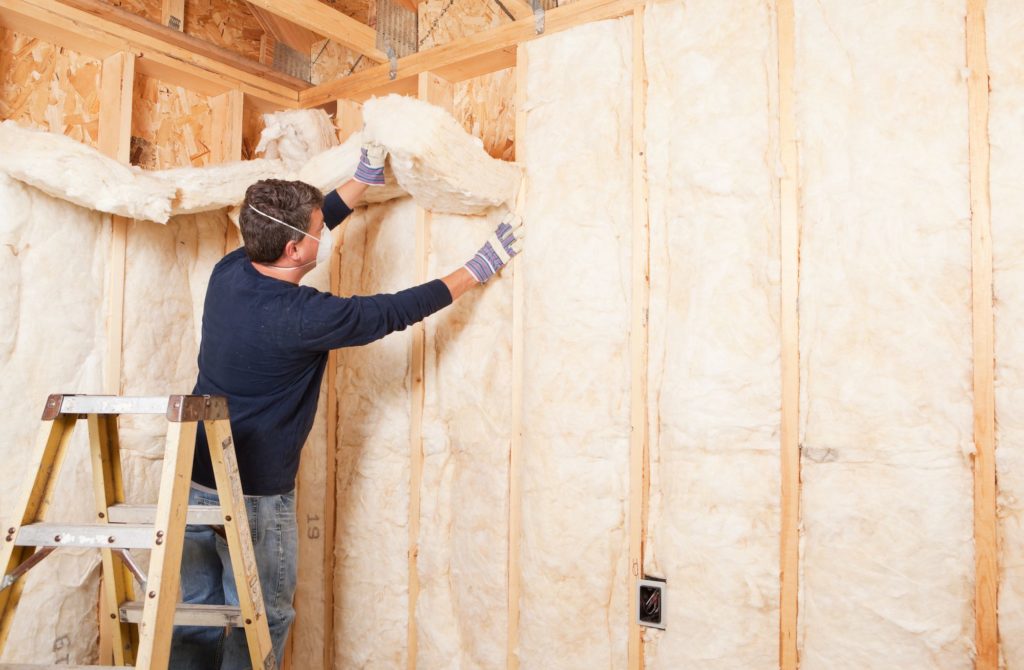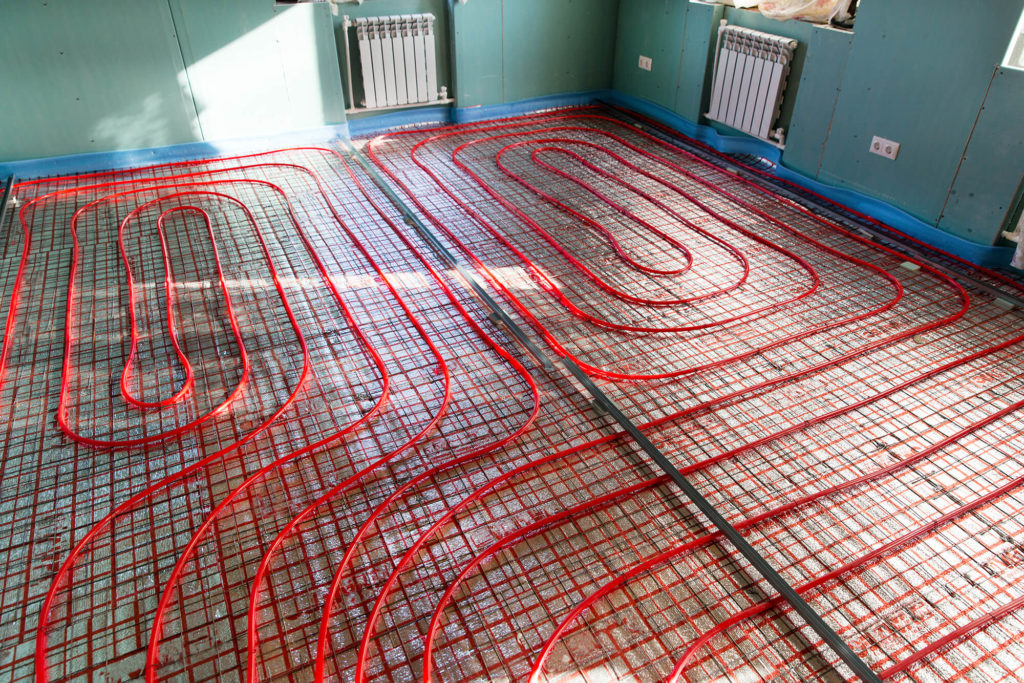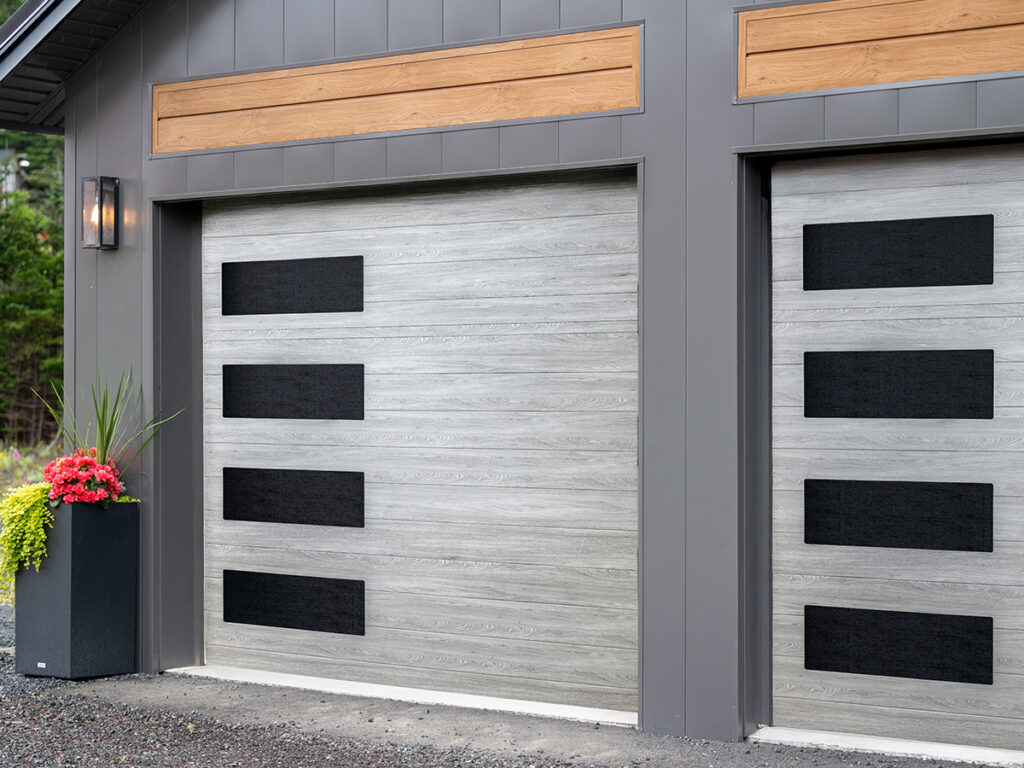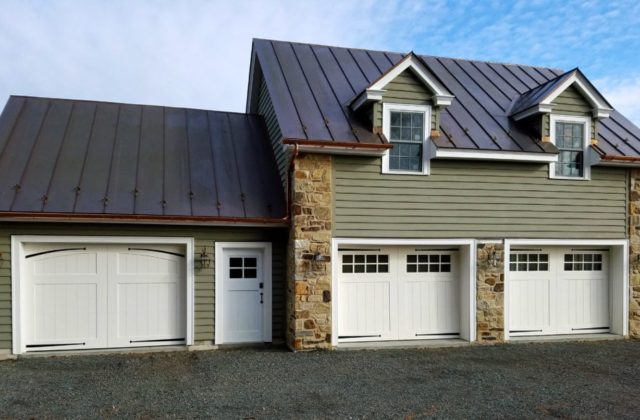Looking for the best way to heat a garage this winter? Whether you’re creating a warm workspace or protecting your vehicle from freezing temperatures, heating your garage can offer a range of benefits.
If you’re not sure where to start, this blog will guide you through the most efficient options to keep your garage comfortable all winter long.
Figure Out Your Garage Heating Needs
Before you choose a garage heating option, you’ll need to determine your specific heating needs. In other words, you have to figure out how hard your heater will need to work to warm your garage. Start by asking yourself these questions:
- How cold are winters in your area?
- What is the square footage of your garage?
- Do you already have sufficient insulation?
- How warm do you want your garage to be?
How Many BTUs Do You Need?
You’ll also want to calculate how many BTUs (British thermal units) your heating source will need to generate. A BTU is the amount of heat required to increase the temperature of one pound of water by one degree Fahrenheit. It’s easy to calculate how many BTUs you’ll need to heat your entire garage.
- Measure the length and width of your garage’s interior in feet. Multiply these two numbers together to get the total square footage of your garage.
- Take that number and divide it by 200.
- If your garage is sufficiently insulated (e.g. your walls have cotton-fiberglass batt insulation), multiply the number in step two by 6,000. If your garage isn’t well-insulated, multiply the number in step two by 9,000.
- The resulting number is the BTU output you need to heat your entire garage.

Make Sure Your Garage is Insulated
Your garage’s insulation level plays a key role in helping you save money on heating (and cooling). Insulation helps keep heat generated by other sources from escaping your garage. And once your garage has been insulated, there are few ongoing maintenance costs.
You should insulate your garage door, windows, and weather stripping, including around pedestrian doors. Every Artisan garage door features flexible and long-lasting Q-LON weather seals to keep drafts and water from seeping into your garage. Wondering how to keep a garage warm in winter? Start with the insulation.
Read our in-depth guide on garage door insulation as a good starting point in your journey to keeping your garage door warm in winter.
Windows
Insulating your garage windows is easy. First, you can check your weatherstripping and see if it needs to be replaced. This will help seal those small gaps where cold weather can get in.
You can always use caulking to help keep the heat in. Or you can simply cover your windows with clear, plastic shrink film for added protection.
Foundation
If you see any holes or cracks in your garage’s foundation, seal them with expanding foam insulation. Cold air can easily seep into your garage from flooring cracks, which will do a number on your heating bill. You might also consider putting down parking mats to soak up any moisture your vehicle may bring into your garage.
Walls
If your walls are open (e.g. not covered by drywall), it’s very important to insulate them. Many older garages weren’t constructed with insulation in mind, so they let a lot of cold air in (and warm air out). Adding insulation to your garage walls will help you maintain a more consistent temperature inside your garage. There are multiple options when it comes to wall insulation:

- Cotton-fiberglass batt insulation
- Cellulose blown-in insulation
- Spray or injection foam insulation
Once you’ve thoroughly insulated your garage, you’re ready to learn how to heat up a garage in winter.
Do You Have a Wooden Garage Door?
If you have a wooden garage door, you may not be the best candidate for a heated garage. In most cases, it leads to an extreme temperature difference between heated indoor space and cold outdoor temperatures.
This can cause a wooden door to bow due to expansion on the inside of the door and contraction from cold on the outside. For this reason, a wood composite or vinyl steel-backed garage door is your best choice.
View our products to view your options and find your new garage door.
Choosing the Best Garage Heater For You
When researching the best ways to heat your garage, you can be overwhelmed with options. We’re breaking down your best garage heater options so you can easily make your decision.
Combustion Space Heaters
These units generate heat using a separate fuel source, such as kerosene, natural gas, propane, or wood pellets, so they don’t need electricity. They can be vented (exhausting fumes outside) or unvented (releasing combustion fumes inside), with unvented ones posing a higher risk of carbon monoxide buildup.
Pros:
- Can be used during power outages
- Less expensive than electric space heaters
- Heats an average-sized garage quickly
Cons:
- Ongoing fuel costs
- Potential fuel odor
- Noise
Convection Heaters
These units generate heat through convection, where air currents circulate through the unit and across the heating element. They’re then pushed out by a fan, thereby heating the air around the unit.
Some convection heaters use a separate fan to draw in cool air, which allows the unit to heat up more quickly. Convection heaters warm the air from the top down due to natural airflow since hot air rises and cool air sinks.
Pros:
- Quiet operation
- Choose from multiple power sources (e.g. electricity, natural gas, propane, etc.)
- Heats spaces evenly due to the natural air flow produced by circulation
Cons:
- Doesn’t provide additional circulation since the air outside the unit doesn’t move
- Doesn’t filter the air, which may leave dust and dirt in the garage
Ductless Heating
This system generates heat by combining an outdoor compressor and an indoor air handling unit. Ductless heating delivers targeted warmth without energy loss through ductwork. Its streamlined design suits garage conversions or retrofits seamlessly.
Pros:
- Energy-efficient
- Environmentally-friendly
- Flexible placement options (e.g. floor, wall, ceiling suspension, etc.)
Cons:
- More expensive upfront than some other heating options
- Filter must be cleaned regularly to prevent debris from building up
Electric Ceiling Panels
These units generate heat using 1-inch thick panels that mount to the ceiling of your garage. The panels convert electrical energy into infrared radiation, which warms objects and people in a room without heating the air. They’re an attractive option when you’re choosing the best way to heat your garage.
Pros:
- Energy-efficient
- Aesthetically-pleasing
- Easy to install and replace since they’re dropped into ceiling frames
Cons:
- Garage floor may be cold since heat rises
- Requires a finished ceiling
- Can be slower to cool down than other heating methods
Electric Space Heaters
These units generate heat using an electrical source. All you have to do is plug them into an outlet.
Most also have safety features that automatically shut off the device when tipping or water is detected.
Pros:
- Energy-efficient
- Affordable
- Don’t require ventilation
Cons:
- May take longer to heat up than some other options
- Can’t leave running unsupervised because the surface heats quickly and can become a fire hazard
- Only heats a small part of your garage
Forced-Air Heaters
This heating system generates heat by blasting hot air into your garage. They typically distribute air via a fan, blower, or air handler.

Pros:
- Less expensive than infrared heat sources and duct systems
- Can be connected to your home’s existing gas or propane lines
- Fairly efficient power consumption vs. power output
Cons:
- Noisy operation
- Blows dirt and debris around your garage
- Requires regular maintenance, such as duct cleaning
Infrared Heaters
These units generate heat through a low-intensity infrared tube that radiates heat throughout your garage. Infrared heaters warm objects before people, so they don’t necessarily warm the air. They work well for garages that aren’t sufficiently insulated because you’re not losing hot air.
Pros:
- Quiet option that can be powered by electricity, propane, or natural gas
- Energy-efficient
- Requires little ongoing maintenance
Cons:
- Heat is short-lived
- Warms a small area, so you’ll need more than one for a large garage
In-Surface Radiant Heat
This system generates heat through infrared radiation. Unlike other heating methods, it heats a surface, rather than the air around it. In-surface radiant heat is one of the most efficient ways to heat a garage.
One way you can use this type of heating system is for heated garage floors.
Pros:
- Versatile option that can be installed in your garage floors, walls, or ceiling
- Quiet operation
- Heats space more evenly than most other options
Cons:
- High upfront costs due to expensive installation
- Installation can be lengthy, especially with floor systems
- Can generate built-up moisture on the surface the system is installed in

Mounted Electric Heaters
These units generate heat through a 240-volt electrical connection. All you have to do is mount it on the surface of your choice and plug it into an outlet.
Pros:
- More powerful than a space heater, so it can heat your whole garage
- Affordable
- Safe option since they have an auto-shutoff feature
Cons:
- Potentially long power cords
- Heat may take longer to disperse than other systems
Propane Heaters
These units generate heat using propane as a fuel source. The propane can also be used to heat appliances, so these units are ideal garage heater options for garage conversions.
Pros:
- Affordable
- Energy-efficient
- Versatile since they can function as standalone units or central heating sources
Cons:
- Ongoing fuel costs
- Requires regular inspection to prevent fire hazards
Sealed Combustion Heaters
These units generate heat using a fuel source, like kerosene or propane. They draw clean air from outside of your garage into the system. At the same time, they vent any exhaust outside your garage.
Pros:
- Sealed design doesn’t blow anything around, making it ideal for a workspace
- Energy-efficient
- Doesn’t require a separate fuel source
Cons:
- Must be placed near an exterior wall since it requires vent connections
- Limited space heating capabilities, so it’s not ideal for large garages
Wood-Burning Stoves
These units generate heat by burning wood. They function similarly to infrared heaters because they heat the area around the unit.

Pros:
- One of the most affordable options since there are no energy costs
- Environmentally-friendly since the power source (wood) is renewable
- Heat large spaces very effectively and for a long time
Cons:
- Use may void homeowner’s insurance policies
- Must regularly clean chimney and flue to avoid exposure to toxic gasses
- High heat can make feeding the fire dangerous
What’s the Best Way to Heat Your Garage?
With so many garage heater options available, choosing the right one can feel overwhelming. The best heater for your garage depends on your specific needs. For smaller, well-insulated spaces, propane or combustion space heaters can provide effective warmth. If you’re interested in heated garage floors, infrared heaters offer an efficient solution.




